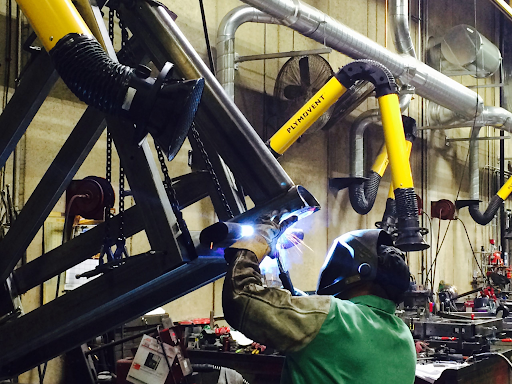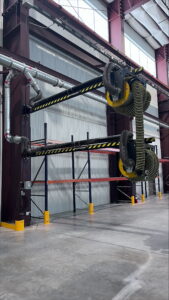 Welding is an essential process in a wide range of industries. While welding work can be outsourced, for many companies it makes more sense to maintain in-house welding operations. For these businesses, it is critically important to maintain proper and effective health and safety measures as an integral part of those operations. This is equally true for vocational schools and educational facilities with welding and metal working shops.
Welding is an essential process in a wide range of industries. While welding work can be outsourced, for many companies it makes more sense to maintain in-house welding operations. For these businesses, it is critically important to maintain proper and effective health and safety measures as an integral part of those operations. This is equally true for vocational schools and educational facilities with welding and metal working shops.
Weld Fume Health Risks
According to a recent research study, “people who worked as welders or had exposure to welding fumes were 43 percent more likely to develop lung cancer.” As Health and Safety Magazine reports, prolonged exposure to weld fumes can also lead to cancer of the larynx, urinary tract, and also cause nervous system and kidney damage.
OSHA Works to Mitigate Weld Fume Risks
In response to workplace health and safety issues associated with weld fumes, the Occupational Safety and Health Administration (OSHA) developed a Hazard Communication Standard (HCS) to mitigate the risks. Operations that maintain welding operations must understand and work within these regulations to keep employees safe and assure their business is compliant.
Three Steps to Assuring Proper Management of Weld Fume
Glacier Technology has extensive experience in developing weld fume extraction systems, and represents some of the leading equipment technologies for dealing with weld fumes. Our team has worked on weld fume solutions including source capture and ventilation for a variety of clients such as metal parts manufacturers and hard facing welding operations, as well as vocational programs in schools. Based on our experience, our team has identified three key steps to assure proper management of weld fume risk.
Step One: Evaluate and Understand the Environment
There are several factors that need to be considered when developing weld fume solutions. Some of these include:
- Type of welding being done
- Metals and materials involved
- Number of welders in the space
- Current ventilation and mitigation measures available
Robotic welding in work cells has become a widely used approach for improving efficiency and replacing human labor in tasks associated with health and safety risks. It is important, however, to understand the impact on human welders and others working in close proximity. Proper ventilation must correlate with the expanded welding capacity.
The Glacier team begins every project with a thorough evaluation of the facility, processes, equipment, and budget involved. This evaluation includes testing of air quality.
Step Two: Understand OSHA Requirements
Working through the complexities of OSHA regulations can be overwhelming. Working with a supplier who has experience in the field and up-to-date knowledge of requirements makes navigating these challenges much easier. OSHA regulations for welding fumes may vary by industry and state. It is essential to know which requirements apply to your operations and take a proactive approach to safety in the workplace.
Step Three: Install the Best Extraction/Ventilation Equipment
Developing the best solution for weld fume management requires the right equipment. In some cases, a variety of systems can be used, however not every approach will be the most efficient or effective. Availability of equipment and application support is important so businesses can avoid needless complications, fines, or production delays.
Partner with Glacier for Dependable Weld Fume Solutions
Glacier Technology has developed great relationships with some of the best manufacturers of weld fume extraction and ventilation equipment. We’ve been able to identify and install dependable weld fume solutions on time and within budget for a host of satisfied customers.
We are eager to help more customers in Minnesota, North Dakota, South Dakota, and Wisconsin improve health, safety, and productivity with reliable weld fume extraction systems.

 Case Study: Innovative Welding Fume Control in a State-of-the-Art Manufacturing Facility
Case Study: Innovative Welding Fume Control in a State-of-the-Art Manufacturing Facility  Weld and Fume Smoke Clean Air Solutions
Weld and Fume Smoke Clean Air Solutions